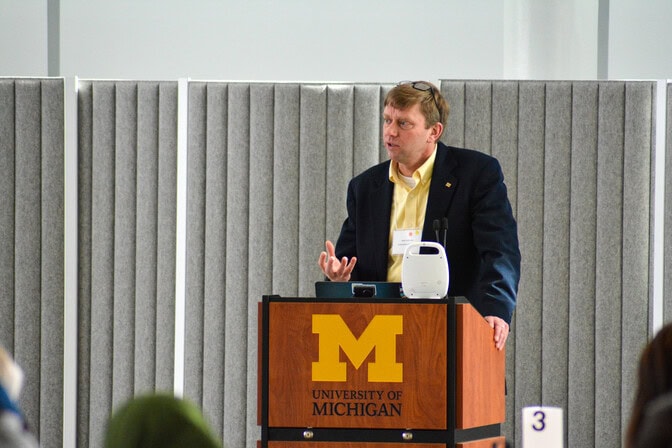
Utilities face common challenges, need collaboration as challenges grow
Michigan power and water providers look for ways to improve reliability and resilience.

Michigan power and water providers look for ways to improve reliability and resilience.
Experts
Water and electricity providers face a growing list of concerns—from changing weather patterns to aging infrastructure—and addressing those effectively will require a new level of cooperation between utilities.
The University of Michigan (U-M) hosted a first-of-its-kind summit for utility operators, government officials and academic researchers Feb. 13-14 to foster that cooperation in the region. Seth Guikema, a U-M professor of civil and environmental engineering, said the event was a first step in pulling together a strategic plan for regional resilience.
“Stronger collaboration has the potential to build resilience in Southeast Michigan and to position the region as a national leader and model in cross-organizational cooperation,” he said.

Guikema and other leaders indicated an interest in repeating the gathering in the coming years to help make that happen.
“We absolutely need, not just a handshake or a good conversation or a meeting once in a while, but we need to be deeply partnered,” said Suzanne Coffey, chief executive officer of the Great Lakes Water Authority (GLWA), before taking the stage on day one. “This is an opportunity for us to begin a deeper partnership with our utility brands.”
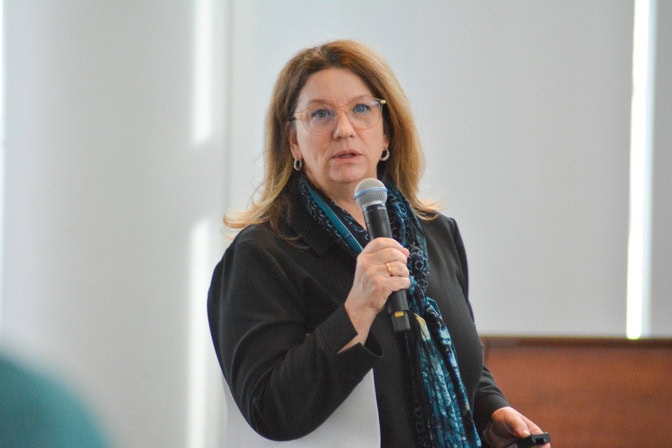
From the start, common ground was not hard to find. Both electric and water utilities are increasingly threatened by weather events that used to be once-a-century occurrences. In the past 25 years alone, Michigan has endured the Northeast blackout of 2003, Metro Detroit’s historic flooding in August 2014 that caused $1.8 billion in damages, and a host of extended blackouts where hundreds of thousands of homes and businesses went without power for days.
The problems posed by these weather changes can look different for each utility.
“We track wind speeds and wind gusts across 21 different weather stations throughout our territory and have for years,” said Gregory Salisbury, Consumers Energy’s vice president of electric distribution engineering. “Since 2004, the amount of wind every year reaching severe and damaging levels has been going up… It’s two to three times more damaging than what our system was designed for or what it used to withstand just 20 years ago.”
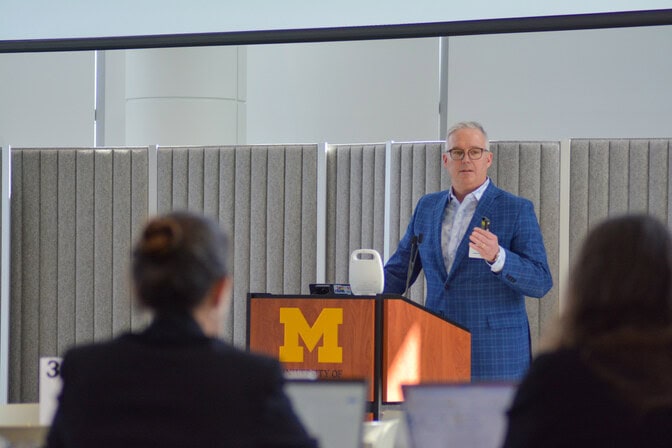
Shifting weather patterns are meeting developing usage trends, further challenging utilities in new ways. On Thursday, utility officials identified several of those, including: increased electrification of just about everything, decarbonization efforts and the increasing energy demand of AI.
“We’ve got to build a system that performs differently in much different weather,” Salisbury said. “Think of it as trying to hit a moving target from a moving platform because the assets are always changing—trees are always growing and the weather’s changing—but customer demands are also changing.”
Extreme weather events are an increasing issue for Coffey and GLWA as well. But those events are exacerbated by another factor—age. GLWA moves drinking water and wastewater for 3.9 million people in 8 counties, through 5 treatment plants and nearly 800 miles of pipelines.
Much of that infrastructure has been in place for generations.
“Our infrastructure is aged up,” Coffey told the summit audience. “We think about the useful life of pipes being 75 to 100 years, and the average age of our pipes is 75 years.
“So what does that mean to us? We’re going to have more and more pipe breaks.”
Regional collaboration is often hindered by lack of a common language for utilities.
“In our industry, there’s no standard measure for ‘resilience,’” said Satvir Deol, director of distribution operations central engineering at DTE Energy. “It’s great to have events like this so we can reach across [industries]…to understand how they measure resilience, and what they do.”
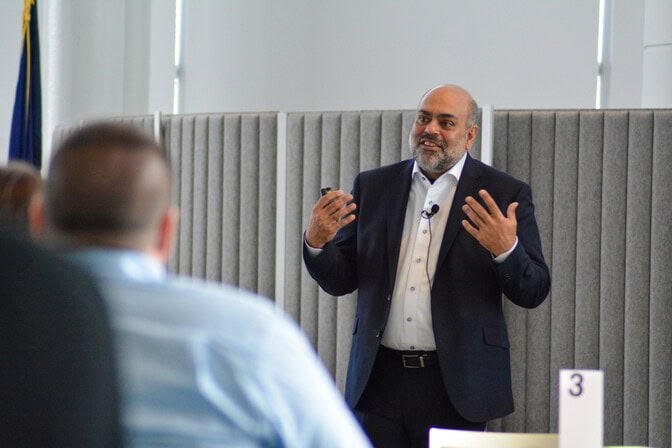
Transitioning to more resilient utility systems is challenging not only in terms of logistics and funding, but in fairness as well.
“When we meet with communities on our system that are more fragile or disadvantaged, they’re not telling us to move faster on issues like decarbonization,” Salisbury said. “They say ‘Our power was out so long that the food in our refrigerator spoils and we can’t afford to replace it.’”
“I think we need to bring resilience into the conversation about a just transition, and we’re going to have to do both.”
U-M has often served as a middle ground for industry, government and research/academia in areas of high public interest, such as transportation and mobility.
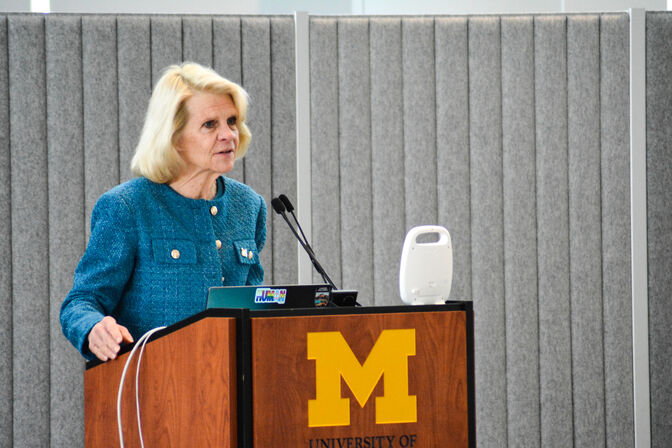
“Here at U-M, we pride ourselves on being a premier public research university committed to interdisciplinary excellence and addressing the world’s most pressing challenges,” said Karen A. Thole, the Robert J. Vlasic dean of engineering at U-M, during opening remarks at the summit. “But we know we can’t do it alone.
“…You all represent the key infrastructure providers from Michigan and more than anyone and, more than anyone, you understand these needs and concerns of Michiganders relating to storms, flooding, pipe breaks and other hazards. And we’re excited that you’re here to collaborate on creating regional resilience.”
U-M Civil and Environmental Engineering‘s Urban Collaboratory, along with the Center for Risk Analysis Informed Decisions Engineering, hosted the event. Roughly 160 participants registered, representing electricity providers like DTE, ITC Holdings and Consumers Energy and water providers like GLWA and the Southeast Oakland County Water Authority, and consultants from across the Midwest.
Cities sending officials included Detroit, Flint, Kalamazoo, Sterling Heights and Harper Woods, while the Southeast Michigan Council of Governments and Michigan’s Department of Environment, Great Lakes and Energy sent representatives as well.